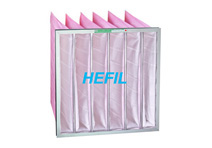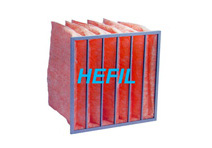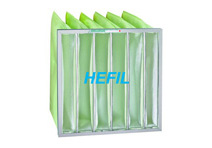Generally speaking, Fan filter units include a 99.99% efficient HEPA filter, 30% ASHRAE pleated type pre filter and internally controllable fan air distribution. When it works, it can achieve high efficiency. For those who are in use of FFU units, they might wonder how these FFU units work. Ok, here is an introduction about the FFU units working principle.
FFU includes fan and filter, and it is equipped with air volume adjustable spin-put centrifugal fan which intakes the air from the top lf FFU. The clean air will be evenly blown out through the whole air outlet at a wind velocity ranging from 0.35 to 0.6 m/s. Fan from the top of FFU inhaled air and by the HEPA filtering, the filtered clean air in the air to 0.45m/s± 20% of the wind speed even sent. As a whole, FFU units have a high working efficiency.
Speaking of FFU units working principle, we have to learn the working principle of HEPA filter because FFU units consist of HEPA filter. HEPA filters provide a very high level of filtration efficiency for the smallest as well as the largest particulate contaminants. There are four basic ways media captures particles: Inertial Impaction, Diffusion, Interception and Sieving.
In the first stage, inertia works on large, heavy particles suspended in the flow stream. These particles are heavier than the fluid surrounding them. As the fluid changes direction to enter the fiber space, the particle continues in a straight line and collides with the Filter media fibers where it is trapped and held. In the progress of diffusion, diffusion works on the smallest particles. Small particles are not held in place by the viscous fluid and diffuse within the flow stream. As the particles traverse the flow stream, they collide with the fiber and are collected. After diffusion, direct interception works on particles in the mid-range size that are not quite large enough to have inertia and not small enough to diffuse within the flow stream. These mid-sized particles follow the flow stream as it bends through the fiber spaces. Particles are intercepted or captured when they touch a fiber. Finally, Sieving, the most common mechanism in filtration, occurs when the particle is too large to fit between the fiber spaces. A HEPA filter would follow the same filtration principles but would have total filtration efficiency greater than 99.97%. In other words, the worst that a HEPA filter would perform would be to capture 99.97% of particles.
This is pretty much everything you need to know about FFU Units working principle. Of course, while these are extremely effective at removing airborne particles which are the leading cause of allergies and asthma attacks, they are no substitute for cleanrooms. If you are in need of FFU unit, you can visit www.hefilter.com to get more information.





